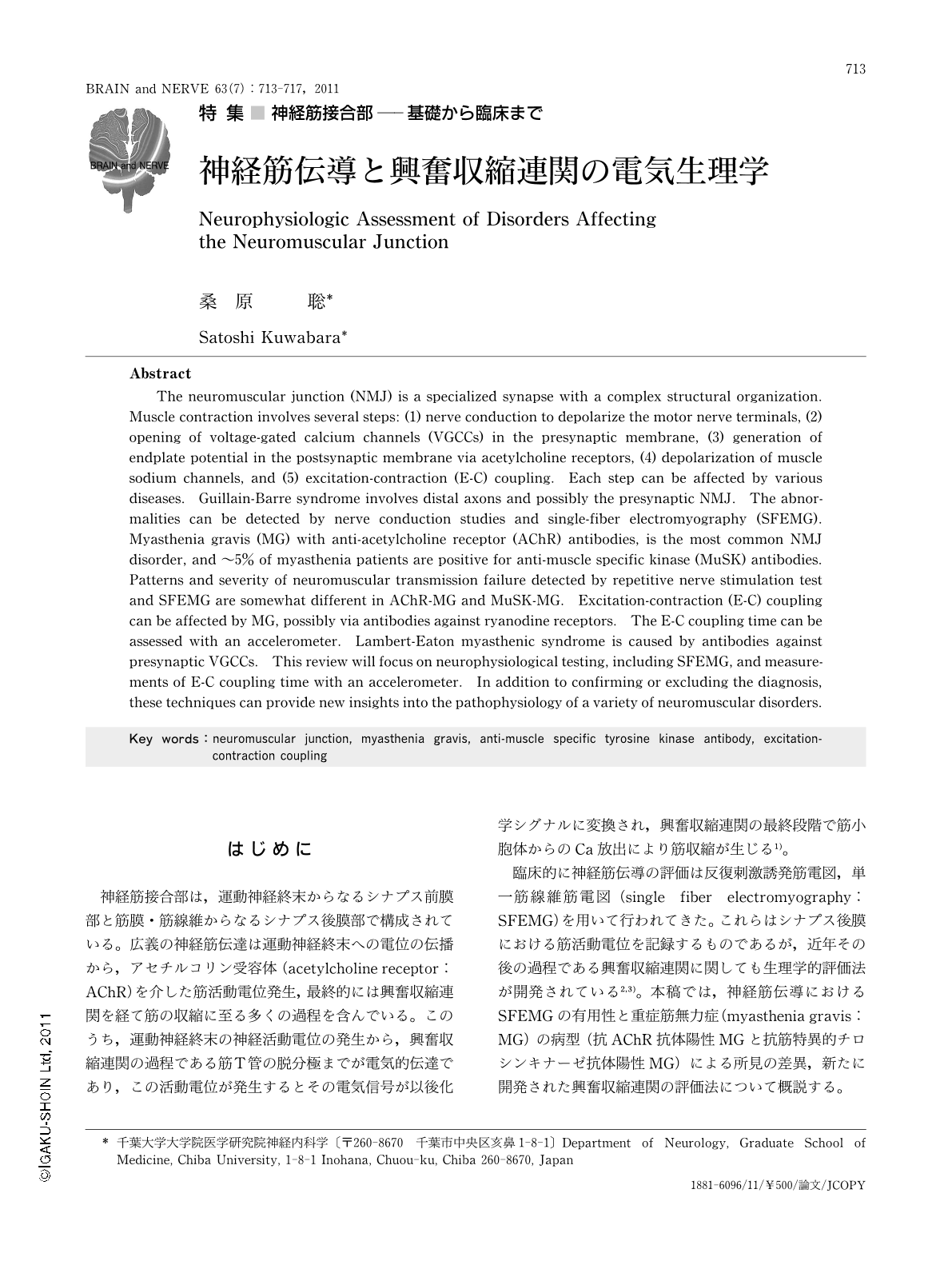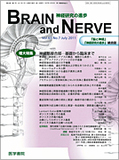Japanese
English
- 有料閲覧
- Abstract 文献概要
- 1ページ目 Look Inside
- 参考文献 Reference
はじめに
神経筋接合部は,運動神経終末からなるシナプス前膜部と筋膜・筋線維からなるシナプス後膜部で構成されている。広義の神経筋伝達は運動神経終末への電位の伝播から,アセチルコリン受容体(acetylcholine receptor:AChR)を介した筋活動電位発生,最終的には興奮収縮連関を経て筋の収縮に至る多くの過程を含んでいる。このうち,運動神経終末の神経活動電位の発生から,興奮収縮連関の過程である筋T管の脱分極までが電気的伝達であり,この活動電位が発生するとその電気信号が以後化学シグナルに変換され,興奮収縮連関の最終段階で筋小胞体からのCa放出により筋収縮が生じる1)。
臨床的に神経筋伝導の評価は反復刺激誘発筋電図,単一筋線維筋電図(single fiber electromyography:SFEMG)を用いて行われてきた。これらはシナプス後膜における筋活動電位を記録するものであるが,近年その後の過程である興奮収縮連関に関しても生理学的評価法が開発されている2,3)。本稿では,神経筋伝導におけるSFEMGの有用性と重症筋無力症(myasthenia gravis:MG)の病型(抗AChR抗体陽性MGと抗筋特異的チロシンキナーゼ抗体陽性MG)による所見の差異,新たに開発された興奮収縮連関の評価法について概説する。
Abstract
The neuromuscular junction (NMJ) is a specialized synapse with a complex structural organization. Muscle contraction involves several steps: (1) nerve conduction to depolarize the motor nerve terminals,(2) opening of voltage-gated calcium channels (VGCCs) in the presynaptic membrane,(3) generation of endplate potential in the postsynaptic membrane via acetylcholine receptors,(4) depolarization of muscle sodium channels,and (5) excitation-contraction (E-C) coupling. Each step can be affected by various diseases. Guillain-Barre syndrome involves distal axons and possibly the presynaptic NMJ. The abnormalities can be detected by nerve conduction studies and single-fiber electromyography (SFEMG). Myasthenia gravis (MG) with anti-acetylcholine receptor (AChR) antibodies,is the most common NMJ disorder,and ~5% of myasthenia patients are positive for anti-muscle specific kinase (MuSK) antibodies. Patterns and severity of neuromuscular transmission failure detected by repetitive nerve stimulation test and SFEMG are somewhat different in AChR-MG and MuSK-MG. Excitation-contraction (E-C) coupling can be affected by MG,possibly via antibodies against ryanodine receptors. The E-C coupling time can be assessed with an accelerometer. Lambert-Eaton myasthenic syndrome is caused by antibodies against presynaptic VGCCs. This review will focus on neurophysiological testing,including SFEMG,and measurements of E-C coupling time with an accelerometer. In addition to confirming or excluding the diagnosis,these techniques can provide new insights into the pathophysiology of a variety of neuromuscular disorders.

Copyright © 2011, Igaku-Shoin Ltd. All rights reserved.


